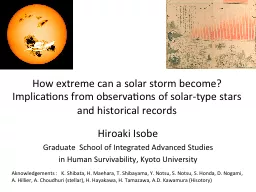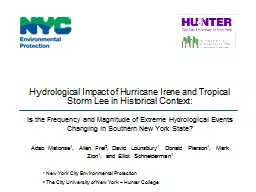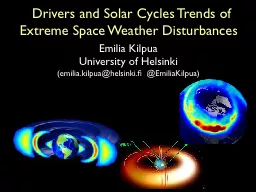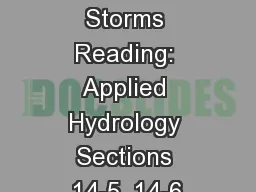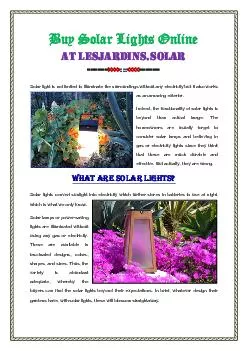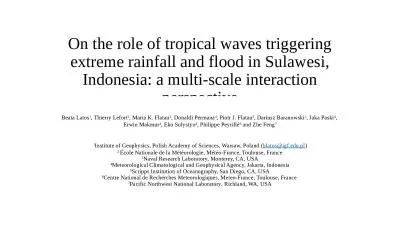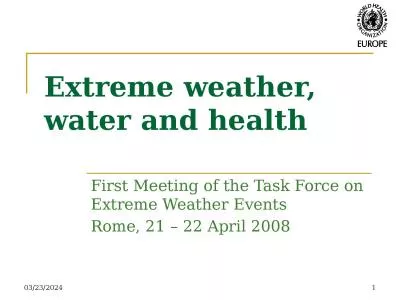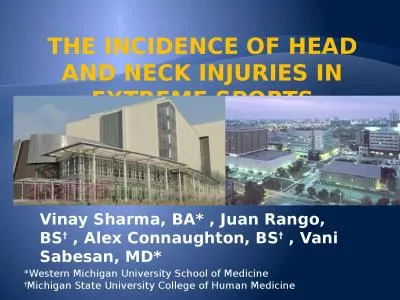PPT-How extreme can a solar storm become
Author : kittie-lecroy | Published Date : 2016-10-21
Implications from observations of solartype stars and historical records Hiroaki Isobe Graduate School of Integrated Advanced Studies in Human Survivability Kyoto
Presentation Embed Code
Download Presentation
Download Presentation The PPT/PDF document "How extreme can a solar storm become" is the property of its rightful owner. Permission is granted to download and print the materials on this website for personal, non-commercial use only, and to display it on your personal computer provided you do not modify the materials and that you retain all copyright notices contained in the materials. By downloading content from our website, you accept the terms of this agreement.
How extreme can a solar storm become: Transcript
Download Rules Of Document
"How extreme can a solar storm become"The content belongs to its owner. You may download and print it for personal use, without modification, and keep all copyright notices. By downloading, you agree to these terms.
Related Documents

